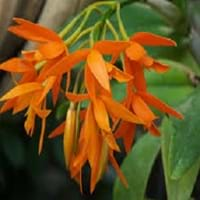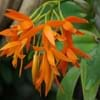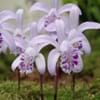Life Span
Perennial
Perennial
Origin
Mexico, Central America
Europe, Eastern Europe, Northern Europe, Southern Europe, Western Europe, United Kingdom, Russia/Siberia, Mediterranean, Turkey, Northern Africa, Central Asia, Eastern Asia, Western Asia, India, Nepal, China, Japan, Korea
Types
Not Available
Bigleaf hydrangea, Hortensia, Smooth hydrangea, Oakleaf hydrangea, Annabelle
Number of Varieties
Not Available
Habitat
Tropical rainforest
Forest edges, Hillside, Woods
USDA Hardiness Zone
10-13
5-9
Sunset Zone
H1, H2, 24
Not Available
Habit
Clump-Forming
Weeping
Flower Color
Orange, Gold, Orange Red
Yellow green
Flower Color Modifier
Not Available
Not Available
Fruit Color
Not Available
Not Available
Leaf Color in Spring
Green, Light Green
Light Green, Yellow green
Leaf Color in Summer
Green, Light Green
Green, Yellow green
Leaf Color in Fall
Green, Light Green
Green, Yellow green
Leaf Color in Winter
Green, Light Green
Olive, Yellow green
Leaf Shape
Long Elliptic
Oblovate
Plant Season
Spring, Summer, Fall, Winter
Spring, Summer, Fall, Winter
Sunlight
Partial Sun, Partial shade
Full Sun, Partial Sun
Type of Soil
Not Available
Not Available
The pH of Soil
Not Available
Not Available
Soil Drainage
Well drained
Not Available
Bloom Time
Early Spring, Spring, Late Spring, Late Winter
Early Spring, Spring, Late Winter
Tolerances
Not Available
Not Available
Where to Plant?
Ground, Pot
Container, Ground
How to Plant?
Seedlings
Seedlings, Stem Planting
Plant Maintenance
Medium
Medium
Watering Requirements
Average Water Needs, Keep the ground moist but not water-logged, Water occasionally
Not Available
In Summer
Lots of watering
Average Water
In Spring
Moderate
Moderate
In Winter
Average Water
Average Water
Soil pH
Not Available
Not Available
Soil Type
Not Available
Not Available
Soil Drainage Capacity
Well drained
Not Available
Sun Exposure
Partial Sun, Partial shade
Full Sun, Partial Sun
Pruning
Remove damaged leaves, Remove dead branches, Remove dead leaves
Remove damaged leaves, Remove dead branches, Remove dead leaves
Fertilizers
All-Purpose Liquid Fertilizer
All-Purpose Liquid Fertilizer
Pests and Diseases
Red blotch
Red blotch
Plant Tolerance
Drought
Not Available
Flowers
Showy
Insignificant
Flower Petal Number
Single
Single
Foliage Texture
Coarse
Medium
Foliage Sheen
Matte
Matte
Attracts
Not Available
Birds
Allergy
no allergic reactions
Chest tightness, Diarrhea, Dizziness, Nausea, Vomiting
Aesthetic Uses
Beautification, Bouquets, Landscape Designing, Showy Purposes, Used for decorating walls, fences, gates, hedges, etc.
Not Available
Beauty Benefits
Not Available
Not Available
Edible Uses
No
Not Available
Environmental Uses
Air purification
Air purification
Medicinal Uses
Not Available
Fever, Kidney problems, Urinary tract problems
Part of Plant Used
Flowers, Leaves, Seeds
Flowers, Root
Other Uses
Air freshner, Decoration Purposes, Economic Purpose, Oil is used in perfume, soaps, creams, etc., Showy Purposes, Used as Ornamental plant
Not Available
Used As Indoor Plant
Yes
Not Available
Used As Outdoor Plant
Yes
Yes
Garden Design
Container, Feature Plant, Hanging Basket, Houseplant, Mixed Border, Rock Garden / Wall, Tropical
Not Available
Botanical Name
GUARIANTHE aurantiaca
VISCUM album
Common Name
Orange Cattleya, Orange Guarianthe Orchid
European Mistletoe
In Hindi
ऑरेंज Cattleya
Hydrangea
In German
Orange Cattleya
Hortensie
In French
orange Cattleya
Hortensia
In Spanish
Orange Cattleya
Hortensia
In Greek
πορτοκαλί Cattleya
υδραγεία
In Portuguese
laranja Cattleya
Hortênsia
In Polish
pomarańczowy Cattleya
Hortensja
In Latin
Oncidium aureum
Hibiscus
Phylum
Magnoliophyta
Not Available
Class
Liliopsida
Not Available
Order
Asparagales
Not Available
Family
Orchidaceae
Viscaceae
Genus
Chrysobalanus
Not Available
Clade
Angiosperms, Monocots
Not Available
Tribe
Epidendreae
Not Available
Subfamily
Epidendroideae
Not Available
Number of Species
Not Available
Season and Care of Orange Cattleya and European Mistletoe
Season and care of Orange Cattleya and European Mistletoe is important to know. While considering everything about Orange Cattleya and European Mistletoe Care, growing season is an essential factor. Orange Cattleya season is Spring, Summer, Fall and Winter and European Mistletoe season is Spring, Summer, Fall and Winter. The type of soil for Orange Cattleya is Not Available and for European Mistletoe is Not Available while the PH of soil for Orange Cattleya is Not Available and for European Mistletoe is Not Available.
Orange Cattleya and European Mistletoe Physical Information
Orange Cattleya and European Mistletoe physical information is very important for comparison. Orange Cattleya height is 45.70 cm and width 45.70 cm whereas European Mistletoe height is 60.00 cm and width 60.00 cm. The color specification of Orange Cattleya and European Mistletoe are as follows:
Orange Cattleya flower color: Orange, Gold and Orange Red
Orange Cattleya leaf color: Green and Light Green
European Mistletoe flower color: Yellow green
- European Mistletoe leaf color: Light Green and Yellow green
Care of Orange Cattleya and European Mistletoe
Care of Orange Cattleya and European Mistletoe include pruning, fertilizers, watering etc. Orange Cattleya pruning is done Remove damaged leaves, Remove dead branches and Remove dead leaves and European Mistletoe pruning is done Remove damaged leaves, Remove dead branches and Remove dead leaves. In summer Orange Cattleya needs Lots of watering and in winter, it needs Average Water. Whereas, in summer European Mistletoe needs Average Water and in winter, it needs Average Water.





